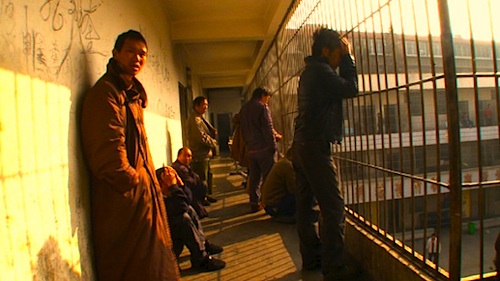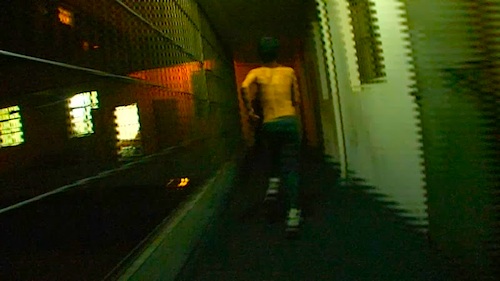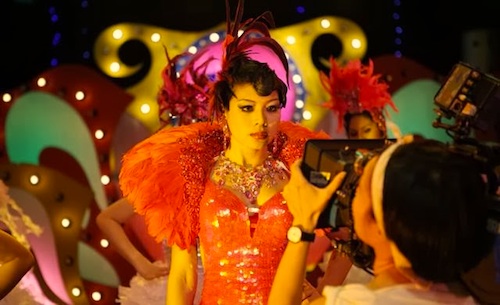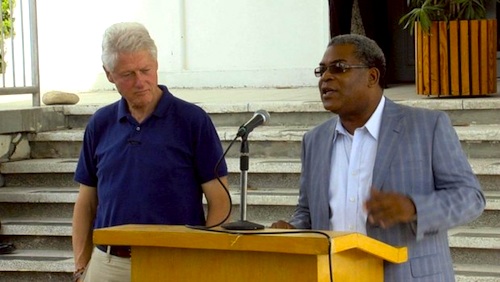
By Joe Bendel. When the 3/11 earthquake and tsunami hit Japan, many who of us worried our close Japanese friends and allies were not getting the same high level attention in Washington and international diplomatic circles as the 2010 earthquake that rocked Haiti. Ironically, Japan might be more fortunate in that respect. Leftist filmmaker Raoul Peck argues international aid efforts in Haiti have largely done more harm than good in Fatal Assistance, which opens this Friday in New York.
With mostly good intentions, the world rushed to aid quake-devastated Haiti. The Interim Haiti Reconstruction Commission (IHRC) was instituted with Bill Clinton and Haitian PM Jean-Max Bellerive installed as co-chairs. Right from the start, it acted like any other hydra-headed multi-national quasi-governmental body.
Peck irrefutably establishes some of the charges in his wide ranging indictment. Without question, the various competing NGOs woefully underperformed in the debris removal process. They were so focused on grand rebuilding schemes, they had neither the expertise nor the donor interest in doing the very work necessary to make the rebuilding stage possible. It is also pretty hard to defend the flood-prone temporary housing constructed (at not inconsiderable cost) in the temporary camps that became permanent new slums. Also, Peck gives rather short shrift to the effect of the UN’s pointless arms embargo, which left Bellerive unable to arm his new police recruits.
However, Peck does not connect the international conspiracy dots nearly as well as he thinks he does. Often, he shows various IHRC proceedings as if they were “ah-hah” moments, but only he can see the smoking gun. In fact, he does his best to ignore the widespread corruption that made the NGO sector legitimately leery of the Haitian government. It might be disappointing that Peck lets Haitian politicians off the hook so easy, but it is understandable, considering he happens to be one himself, having served as Minister of Culture under PM Rosny Smarth’s short-lived administration.
As much as Peck wants to focus on the international relief “industry,” questions regarding domestic corruption are highly pertinent. Recently, the Filipino expat community largely shunned government agencies in favor of organizations like the International Red Cross precisely because of similar concerns. Still, it is hard to have much confidence in the IHRC, the OAS or any of the rest of the do-gooding alphabet soup based on the results Peck documents.
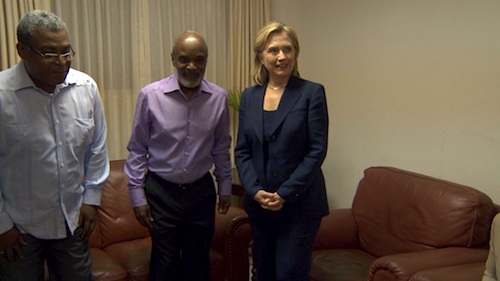
In fact, if anyone emerges as Fatal’s genuine bad guy, it is Bill Clinton, whom Peck explicitly accuses of using the tragedy as a disgusting ego-stroke. According to Peck and frustrated aid workers, the Hot Springs native is far more concerned with preening at ribbon cutting ceremonies than actually resolving the IHRC’s internal divisions or doing any sort of work in general.
Peck will convince just about every viewer of his general thesis: international aid is often misallocated and counter-productive. However, his assorted sub-points do not always convince. Frankly, Fatal just as easily supports the sort of Public Choice Theory analysis developed by the late Nobel Lauriat James Buchanan, who argued that government (and presumably extra-governmental NGO) bureaucrats are just as influenced by self-interest as anyone operating in the private sector. Fatal will engender pity for Haiti and contempt for Clinton, but Landon Van Soest’s Good Fortune remains a more thoughtful exploration of unintended consequences of first to third world aid programs. Sometimes quite revealing, but rather scattershot in its insight, Fatal Assistance is narrowly recommended for those interested in the politics of disaster relief when it opens this Friday (2/28) at the Elinor Bunin Munroe Film Center.
LFM GRADE: B-
Posted on February 25th, 2014 at 1:14am.




